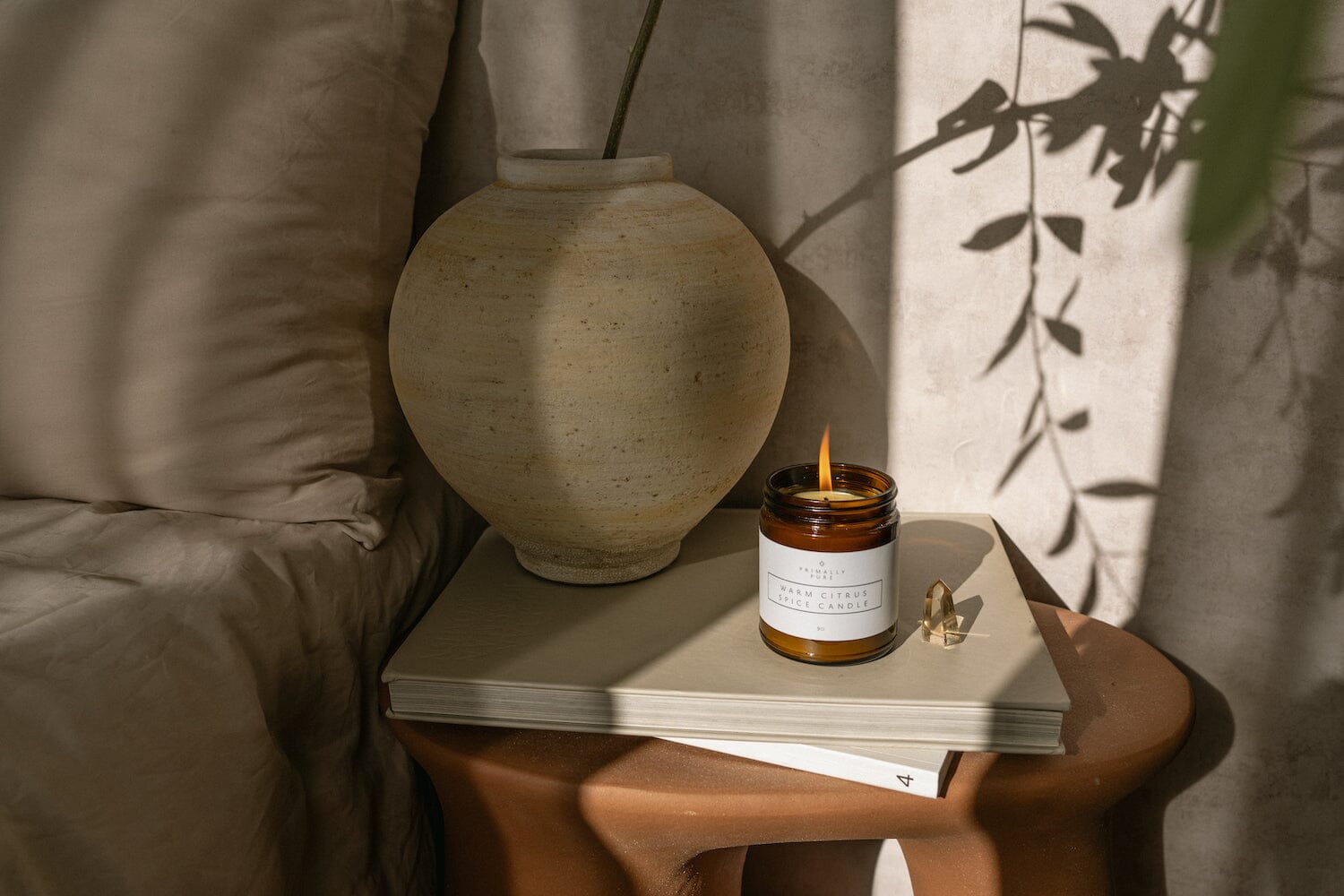Mold Toxicity + Testing for Mold at Home (Part 1 From Our Founder Bethany)
Summary
Mold in your living spaces can cause mold toxicity in your body, also known as mold illness. Here’s how to get diagnosed + tips on testing for mold at home.
→ This post is the first of a 2-part series focused on mold toxicity + getting rid of mold. Check out Part 2 after you read this one.
I won’t sugarcoat it – mold toxicity is a complicated topic.
Ask ten people about mold, and you’ll get ten vastly different answers. There are so many viewpoints on the legitimacy of the different tests, when and how you should go about testing for mold toxicity, and how to get rid of it.
About a year ago, I had a gut feeling that something was wrong in our house – and in my body. We were all getting sick more often than normal, and there were some signs of mold. So we decided to test for mold at home to assess the problem.
The lab tests (and detailed visual inspection) confirmed there was mold – a lot more than we thought. Since we were planning to begin remodeling within the next year, we decided to stick it out and address it then. Looking back, we should have handled it immediately instead of staying in the moldy environment.
That winter, I got sick 3x back to back. My husband and I knew we needed to prioritize getting out of our living space – regardless of whether my persistent colds were directly tied to the mold or not.
Since then, it’s been a rollercoaster, to put it mildly. We moved out of our house to minimize exposure – and even lived in a tent in our backyard for a few months! We met with several experts to get different opinions and made some unconventional – maybe even extreme (but necessary) choices for our family’s health.
But please know before reading this mold series – I don’t claim to be an expert in any of this. But I do think that mold toxicity (and mold in general) is a topic that isn’t discussed enough in the health world. So this is one way I can do my part – and perhaps help someone else find healing through work with a mold toxicity expert or natural remediation company.
It’s not a simple process, but I’ve realized it’s too important to overlook. This is a general overview of how to start testing your home for mold + what mold toxicity might look or feel like. I’m not a doctor, and this is just my personal experience with mold – in full transparency.
Mold + Mold Toxicity Explained
My knowledge is definitely not the end all be all. But here’s an overview of why you want to avoid mold in your living spaces, which can lead to mold toxicity.
You probably know this already, but mold is a fungus that grows and thrives in places with excess moisture. Common culprits are areas like:
- Roofs
- Attics
- Behind walls
- Under wood or tile
- Ceilings
- Showers
- Bathtubs
- Underneath sinks
Like many things, not all mold is inherently bad.
There are mold spores everywhere. Some mold spores are relatively harmless – some are toxic.
The toxic molds aren’t harmful on their own. What’s dangerous is the toxins they emit naturally, called mycotoxins.1 To give you a visual, mold emits mycotoxins in cloud-like “poofs” that travel and land on other surfaces. Too much exposure in your environment to mycotoxins over time can lead to mold toxicity in the body.
→ So, how do you know if you’ve been exposed to mold toxicity?
That’s the issue. Mold toxicity is hard to identify because everyone has different allergies, sensitivities, and intolerances – especially regarding mold. In fact, it’s estimated that up to 25% of people have a genetic tendency to develop mold toxicity.2
Kind of crazy, right? As I said, mold illness isn’t discussed in conventional medicine, but it IS a problem for many. It’s something doctors should be advising us to prevent. Yet often, we don’t discover it until it’s already rampant.
The bottom line: it’s a complex, multi-step process to diagnose mold toxicity. And even then, the science isn’t exact. This quote from Parsley Health sums it up perfectly:1
“According to Megan McElroy, PA-C, ‘Mold toxicity issues are commonly overlooked in conventional medicine.’ Why? Because mold toxicity can cause a wide range of symptoms that can be hard to describe if you have them and hard to piece together for your doctor, especially if they don’t have experience and training in mold issues."
“As McElroy explains it, ‘The symptoms of mycotoxin-induced illness vary and have no pattern, and they are not unique to this illness, which means they can easily be mistaken for something else.’”
That’s why finding a trusted health professional with mold experience is the best way to find out if you have mold toxicity.
Symptoms of Mold Toxicity
Because they often overlap with other illnesses + have no specific pattern, this is not intended to be a diagnosis guide for mold toxicity. A functional medicine doctor that specializes in mold toxicity testing should make a diagnosis.
This list is to give you an idea of how symptoms of mold toxicity could present in your body.1
- Cognitive difficulties (brain fog, memory, or anxiety)
- Chronic bloody noses 3
- Pain (especially abdominal or muscular)
- Unexplained weight gain or loss
- Numbness and tingling in your extremities (or other areas of the body)
- Metallic taste in your mouth
- Vertigo or dizziness
- Tinnitus (ringing in your ears)
- Gut/Digestive issues (especially food intolerances + constant bloating)
- Significant fatigue (that affects daily activities)
- Mood changes
- Excessive thirst + dehydration (can present as bed-wetting in children)
- Symptoms that mimic hormonal imbalance (hair loss, rashes)
- Health status
- Length of exposure
- Toxin load
- Genetics
With all these factors considered, here’s what I learned about mold toxicity testing – if you decide it’s necessary.
Mold Toxicity Testing for Your Body
Usually, mold toxicity testing is done through urine and/or blood tests. It may take a comprehensive approach to reach a diagnosis with various tests.
Mosaic Diagnostics (formerly known as Great Plains) is a wonderful resource if you want to learn more about mold toxicity on a scientific level. They also offer mold toxicity testing, but fair warning: it may have to be done through your practitioner (my testing was all done through my functional medicine practitioner).
Once my doctor confirmed mold was present in my body, we began testing the one place we spend the most time: our house.
Common sense tells us – if the same strain of mold appears in a body test + environment test, you can know pretty safely where the exposure is coming from.
Of course, this opens another conversation: how to check for mold in your house – or your apartment, airstream, office, etc.
How to Check for Mold in Your House
Just as there are many methods and opinions on testing your body for mold, you’ll also hear of several different tests + processes for how to check for mold in your house.
I’ll list a few of them here for you to have the information if you decide to move forward with testing for mold at home.
1. Visually Inspect for Mold
Checking for visible signs of mold is the best first step in testing for mold at home. But it’s important to note: it’s not always comprehensive, given the fact that mold can lurk in hidden places. You’ll still need to hire a professional to inspect areas like attics, crawl spaces, and air ducts.
The general consensus is: if you see mold, you have mold.
2. Mold Tests
There are a few other popular methods of testing for mold at home. But I’ll be the first to admit – they each come with their own debated variables and validity.
→ ERMI (Environmental Relative Moldiness Index) – often seen as the gold standard of testing for mold at home. Yet some say this form of testing isn’t as telling as it’s chalked up to be. Our house tested at level 26 (safe levels are under 4). Although an ERMI won’t be able to detect the location of any potential mold, it will give a general idea of your home's overall mold content.
→ Petri dishes – cheap, easy, and telling in terms of what strains of mold are present. The downside is that they’re DIY and don’t show how widespread the problem is – or the direct source of mold. This method of testing is very inexpensive, as Petri dishes can easily be found online and at most hardware stores.
→ Room-to-room air samples – testing for mold in the air can be helpful, but mold spores can be released at different times and settle onto surfaces. So this means air samples aren’t always accurate.
I know what you’re thinking: this sounds complicated. Truthfully, it is. Hiring a trusted mold professional to do comprehensive testing is the easiest route if you’re able.
If you have positive results, of course, you’re left wondering how to get rid of mold. In our situation, we looked into many different options and met with various professionals – each with different opinions. Are you sensing a theme? Haha!
You Have Mold. Now What?
Truthfully, I’m still learning about mold toxicity and how to eliminate it from my life (and our home!). But like many issues, it’s always better to fix them before you have a bigger problem on your hands.
Pay attention to what your body is doing. Mold affects people differently, but you know your body best. Trust your intuition.
If your house isn’t new and you have concerns, do testing. The more info, the better. Do all kinds of mold testing, especially a detailed visual examination. Beginning the process of testing is the only way to start on your path toward healing.
After testing for mold at home + getting a formal mold toxicity diagnosis from my doctor, what became obvious was this: my family needed to heal. Our next step: we needed to address the mold toxicity that had taken precedence over our house + our health.
With all the information gathered and time spent consulting with experts, we were ready for phase two in our mold journey: healing and resolving the mold that had taken over.
Check out my post next week to learn more about the steps we took to remove mold from our home + detox our bodies from the exposure.
XO,
Bethany
Sources:
- Parsley Health Articles | 12 Mold Toxicity Symptoms to Watch For—and How to Heal if Exposed
- Real Time Laboratories Inc. | Mold Statistics and Facts
- Hindawi Journal of Environmental and Public Health | a Water-Damaged Home and Health of Occupants: A Case Study
- Mosaic Diagnostics | Review of Mold and Mycotoxin Health Effects
Pin your fav blog post below:



Leave a Comment